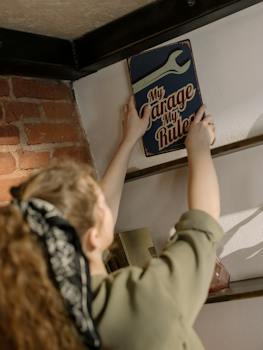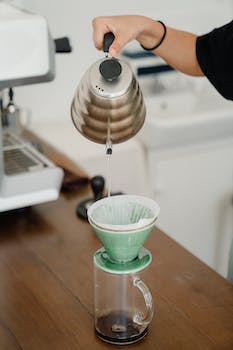

-
Table of Contents
Unveiling the Secrets of Clapping: Decoding the Science
Introduction
Clapping hands is a common human gesture that involves striking the palms of the hands together to create a sound. While it may seem like a simple action, there is actually a fascinating science behind the phenomenon. In this article, we will delve into the complexity of clapping hands and explore the various factors that contribute to the sound produced. By unraveling the science behind clapping hands, we can gain a deeper understanding of this seemingly mundane yet intriguing human behavior.
The Physics of Clapping Hands: Exploring the Mechanics Behind the Sound
Clapping hands is a simple action that we often take for granted. We do it to show appreciation, to create rhythm, or simply out of habit. But have you ever wondered about the science behind this seemingly mundane act? Clapping hands is not just a random collision of palms; it is a complex interplay of physics and mechanics that produces the familiar sound we all know.
To understand the physics of clapping hands, we need to delve into the mechanics behind the sound. When two hands come together, they create a compression wave in the surrounding air. This compression wave travels through the air as a sound wave, eventually reaching our ears. The sound we hear is the result of this wave reaching our eardrums and being interpreted by our brain.
The intensity of the sound produced by clapping hands depends on several factors. One crucial factor is the speed at which the hands collide. The faster the collision, the louder the sound. This is because a faster collision creates a stronger compression wave, resulting in a more intense sound. So, if you want to make a louder clap, you need to bring your hands together with more speed and force.
Another factor that affects the sound of clapping hands is the surface area of contact. When two hands meet, they create a larger surface area for the compression wave to propagate. This larger surface area allows for a more efficient transfer of energy from the hands to the air, resulting in a louder sound. So, if you want to produce a louder clap, try to maximize the contact between your hands.
Interestingly, the shape of our hands also plays a role in the sound produced when clapping. The cupping of our hands creates a resonance chamber that amplifies the sound. This resonance chamber acts like a mini loudspeaker, enhancing the intensity of the sound wave. So, the way we shape our hands when clapping can significantly impact the sound we produce.
Furthermore, the angle at which our hands collide also affects the sound. When our hands meet at an angle, they create a slapping motion that generates a sharper and more distinct sound. On the other hand, when our hands meet flatly, the sound produced is more muffled and less pronounced. So, the angle at which we clap our hands can influence the quality of the sound.
In addition to the mechanics of clapping hands, there is also a psychological aspect to consider. The sound of clapping has been shown to have a positive effect on our mood and emotions. It can create a sense of unity and excitement, especially in a group setting. This psychological response to clapping further highlights the significance of this seemingly simple action.
In conclusion, clapping hands is not just a mindless gesture; it is a fascinating interplay of physics and mechanics. The speed, surface area, shape, and angle of our hands all contribute to the sound produced when we clap. Understanding the science behind clapping hands not only deepens our appreciation for this everyday action but also sheds light on the intricate workings of the world around us. So, the next time you find yourself clapping, take a moment to marvel at the complexity behind this seemingly simple act.
The Neuroscience of Clapping Hands: Understanding the Brain's Response to Rhythmic Movements

The act of clapping hands is a universal gesture that is deeply ingrained in human culture. From applauding a performance to showing appreciation, clapping hands is a way for individuals to express their emotions and connect with others. But have you ever wondered what happens in the brain when we clap our hands? The science behind clapping hands is a fascinating field of study that delves into the intricacies of the brain's response to rhythmic movements.
At its core, clapping hands involves the coordination of various brain regions and neural pathways. When we decide to clap, the prefrontal cortex, responsible for decision-making and motor planning, sends signals to the motor cortex, which controls voluntary movements. These signals then travel down the spinal cord to the muscles in our hands and arms, initiating the rhythmic motion.
But what makes clapping hands truly captivating is the synchronization of movements among individuals. When a group of people claps together, their brains are not only coordinating their own movements but also attuning to the movements of others. This phenomenon, known as entrainment, is a fundamental aspect of human social interaction.
Entrainment occurs when individuals align their movements and behaviors with those around them. In the case of clapping hands, the brain's mirror neuron system plays a crucial role. Mirror neurons are specialized cells that fire both when we perform an action and when we observe someone else performing the same action. These neurons allow us to understand and imitate the actions of others, fostering a sense of empathy and social connection.
When we witness someone clapping their hands, our mirror neurons fire, mirroring their movements in our own brains. This neural mirroring not only helps us understand the action but also primes our motor system to imitate it. As a result, we are more likely to join in and clap our hands in sync with others.
The brain's response to clapping hands goes beyond mere motor coordination. Research has shown that rhythmic movements, such as clapping, have a profound impact on the brain's reward system. When we engage in rhythmic activities, such as clapping hands, the brain releases a surge of dopamine, a neurotransmitter associated with pleasure and reward.
This release of dopamine reinforces the behavior, making us more likely to repeat it. It explains why clapping hands can be so enjoyable and why we often feel a sense of satisfaction when we participate in a synchronized applause. The brain's reward system is wired to respond to rhythmic movements, reinforcing social bonding and enhancing our overall experience.
Understanding the science behind clapping hands not only sheds light on the brain's intricate workings but also highlights the importance of rhythmic activities in human social interaction. From ancient rituals to modern-day concerts, clapping hands has been a powerful tool for bringing people together and fostering a sense of unity.
So, the next time you find yourself clapping your hands, take a moment to appreciate the complexity of this seemingly simple gesture. From the coordination of brain regions to the synchronization of movements, clapping hands is a testament to the remarkable capabilities of the human brain.
The Cultural Significance of Clapping Hands: Tracing the Origins and Evolution of this Universal Gesture
The act of clapping hands is a universal gesture that transcends cultural boundaries. It is a simple yet powerful way to express appreciation, approval, and celebration. But have you ever wondered about the origins and evolution of this seemingly instinctive action? In this article, we will delve into the cultural significance of clapping hands, tracing its roots back to ancient civilizations and exploring how it has evolved over time.
Clapping hands has been a part of human culture for thousands of years. In ancient civilizations such as Egypt, Greece, and Rome, clapping was used as a form of communication and expression. It was often associated with religious rituals, where it was believed to ward off evil spirits and bring good fortune. The rhythmic sound of clapping hands was also used in music and dance, adding an element of rhythm and harmony to performances.
As societies evolved, so did the cultural significance of clapping hands. In medieval Europe, clapping became a way to show appreciation for theatrical performances and musical concerts. It was a way for the audience to express their enjoyment and admiration for the artists' talents. This tradition continues to this day, with clapping being an integral part of live performances in theaters, concert halls, and stadiums around the world.
Clapping hands also plays a significant role in sports events. The thunderous applause of a crowd can create an electrifying atmosphere, motivating athletes and adding to the excitement of the game. It is a way for fans to show their support and appreciation for their favorite teams and players. The rhythmic clapping of hands can also be used as a form of communication between fans, creating a sense of unity and camaraderie.
In addition to its cultural significance, clapping hands also has a scientific explanation. When we clap our hands, the impact creates a sound wave that travels through the air. This sound wave is then detected by our ears, which send signals to our brain, allowing us to perceive the sound. The intensity and duration of the sound wave can vary depending on the force and speed of the clap. This is why a gentle applause produces a softer sound, while a vigorous applause creates a louder and more resonant sound.
Furthermore, clapping hands has been found to have psychological benefits. Studies have shown that clapping can release endorphins, which are natural painkillers and mood enhancers. It can also increase blood circulation and stimulate the nervous system, promoting overall well-being. Clapping hands in a group setting can create a sense of unity and belonging, fostering social connections and reducing feelings of isolation.
In conclusion, the act of clapping hands holds a deep cultural significance that has evolved over time. From its origins in ancient civilizations to its role in modern-day society, clapping has been a way for humans to communicate, express appreciation, and create a sense of unity. Its scientific explanation and psychological benefits further highlight the complexity and importance of this universal gesture. So, the next time you find yourself clapping your hands, remember the rich history and significance behind this seemingly simple action.
Q&A
1. What is the science behind clapping hands?
Clapping hands involves the coordination of muscles and the generation of sound through the collision of palms.
2. How does clapping create sound?
When hands collide, the air trapped between them is compressed, creating a pressure wave that propagates as sound.
3. Why do we clap to show appreciation?
Clapping is a universal gesture of applause that signifies approval, appreciation, and celebration in various cultures.
Conclusion
In conclusion, the science behind clapping hands is a complex phenomenon that involves various factors such as the coordination of muscles, the generation of sound waves, and the perception of sound by the human ear. The act of clapping hands is not only a form of expression and communication but also a fascinating subject for scientific study. Understanding the intricacies of clapping hands can provide insights into human physiology, acoustics, and cognitive processes. Further research in this area can contribute to our knowledge of human behavior and the science of sound.











